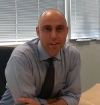Wouldn't it be just great if everyone got along with everyone else?
Sadly, that's just a wish; no matter how nice you think you are, conflict is unavoidable when you work with other people. When a group of people work together, you'll find that it's not a matter of
if conflict will arise, but
when it will!

What Causes Conflict?
Collaboration always leads to conflict, because people will always have different viewpoints on certain issues. Give them a problem to solve and it's guaranteed there will be disagreements about what's the best way to go about it. Whether your team disagrees over the methods, technology, or even the understanding of the problem itself, progress can only be made if these conflicts are resolved.
Many new project managers soon find that conflict management is one of the hardest tasks they have to deal with. Conflict can stem from
any number of factors, but regardless of the cause, they must be dealt with swiftly before it causes the project's demise.
We can probably agree that conflict is obstructive and potentially destructive, but it doesn't have to be that way. In fact, if handled correctly, conflict can lead to new approaches to problem-solving processes. Some organizational experts go so far as to say that conflict is normal and is actually a vital ingredient to any business's success. A company culture where team members can disagree with one another, is said to spur innovation and better decision-making. The challenge then becomes figuring out which conflicts are healthy ... and which ones are harmful.
The Five Modes of Conflict Resolution: the Thomas-Kilmann Model
Now that we (hopefully) agree that conflict isn't necessarily a bad thing, how do we keep it from negatively impacting a project team? As conflict management and resolution is a well-debated issue, several methods of
resolving conflict have been identified and studied over the years.
But the most durable - and most-often quoted - is the
Thomas-Kilmann Model, which outlines five modes for conflict resolution.

Forcing
Also known as Here, project managers use their authority to "force" an action on the team that is involved in conflict. This style is used when a decision needs to be made due to time or cost constraints, and the conflicting parties are not being agreeable. But although it can provide a quick resolution, it also comes across as unprofessional; it also buries opposition which may simmer away underneath, so isn't an effective long-term strategy.
Avoiding
In this technique, the project manager puts off addressing any conflicting issues until a later date. Some people do this in the hope that the conflict will resolve itself. While this can be used as a temporary solution, it doesn't address the problem and it will continue to occur.
Smoothing
Also referred to as accommodating, smoothing works by emphasizing and focusing on the areas of agreement among team members, while any areas of disagreement are downplayed. But because the underlying issue isn't discussed (and therefore resolved) conflicts are never really addressed properly through smoothing.
Compromising
Also known as reconciling, this method takes the view that relationships between the parties involved are important, therefore both are willing to lose something for their common goal. Conflicting parties are encouraged to come to a mutually satisfactory solution – one way managers do this is to remind their teams about the common goal.
Unfortunately, aiming to partially satisfy everyone may not address the real issues, so can appear out of touch, or even weak.
Collaborating
Widely considered the best method for handling project team conflicts, collaborating works by bringing the conflict into the open where it can be addressed directly. When the problems are fully identified and all sides have been heard, then decisions can be made that will resolve the issue.
Depending on the circumstances, each of these methods have their place in conflict resolution. But more often than not, they leave at least one party unsatisfied with the outcome and project managers soon find that not every conflict can be rectified with a textbook solution.
Dealing With Conflict in a Project Team
To help you deal with project conflicts in the best way, here are my top four "real-life" suggestions for resolving conflicts in a project team.
1) Acknowledge the conflict
It's easier to turn a blind eye to conflicts and hope they go away, isn't it? But in reality, that's never how it plays out. While most conflicts are easy to avoid initially, when they start to have an impact on the success of the project, you need to acknowledge its presence and find ways to resolve it.
2) Agree to a co-operative process
With the conflict acknowledged, a project manager should set the ground rules for its resolution. This starts with everyone involved
agreeing to cooperate towards resolving the conflict, which involves getting agreement from team members that they'll put the team and the project first, and set aside their opinions or ideas for the time being. This allows project managers to focus on asking questions to find the specific causes and understand the roots of the conflict.
3) Clarify positions
With the team ready to resolve the conflict, the next step is to understand the situation and where each team member stands. By clarifying people's positions, you can see whether there are distinct groups within the team, or if it's individual team members that support a particular view. Doing this will help you make sure that each person's opinion is heard and understood; and for you to see past emotions and reveal the true nature of the conflict.
4) Collaborate on a solution
With everyone's cards on the table, the project manager should ask the team for a solution. By involving everyone in the resolution process, you ensure that everyone's concerns are taken into account and addressed. By getting them to all agree on the action to be taken, it also adds an element of accountability for everyone concerned.

Conclusion
Managing conflict can be both easy and difficult at the same time and, unfortunately, using textbook or cookie-cutter methods of conflict resolution alone won't work. Whether the conflict came about because people don't know what is expected of them, or as a result of some kind of "power struggle", swift resolution is the only way to move the project forward. Conflict in project management is inevitable but when properly managed, it can actually lead to favorable conditions.
For project managers, conflict resolution involves trying to understand the subtleties of a conflict, and learning when to use the different approaches to conflict resolution. There's no single way that will help everyone deal with every conflict situation, but by taking the time to first acknowledge and understand the cause of the conflict, project managers can develop a resolution style that incorporates different ways of dealing with conflicts.
So don't shy away from problems! Embracing them and managing them quickly will lead to a motivated team, enhanced communication, and help you and your team get work done more effectively to produce better project outcomes.



























